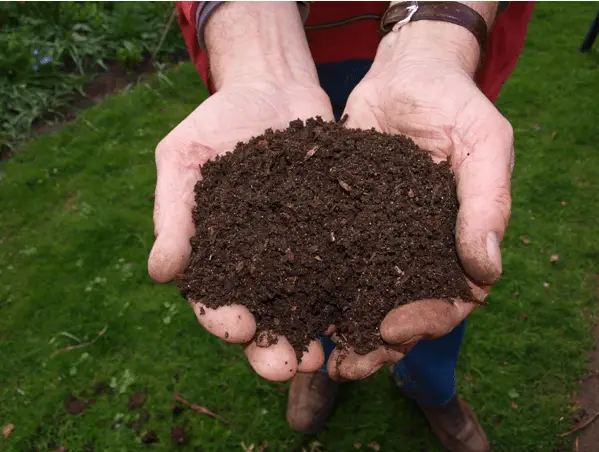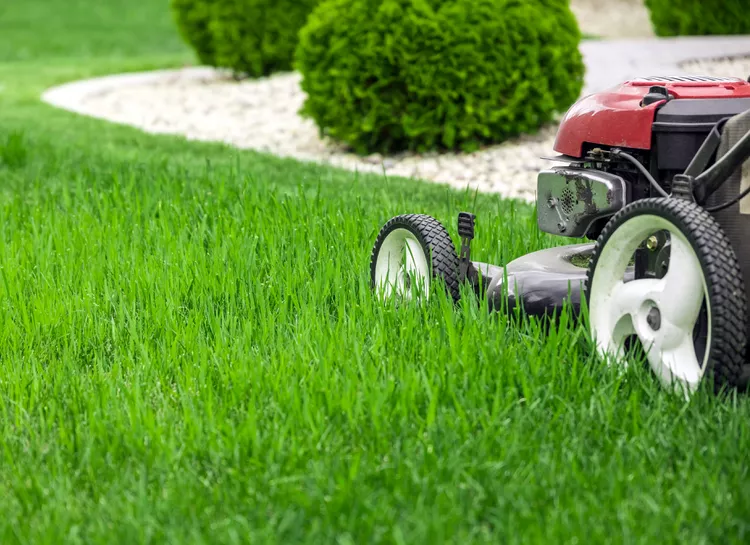What Should I Use On My Lawn in The Spring?
Last Updated on March 30, 2025 by Duncan
Long, hard winters can be harsh on lawns, compacting the soil and depleting nutrients. As the grass begins to grow in the spring, it requires help to get in shape for another summer of hard work.
A yearly spring lawn treatment is an efficient approach to care for your grass in the spring and provide it with the conditions it requires to grow effectively.
Good soil structure allows the grass to produce robust roots.
Added nutrients to encourage lush green growth.
You remove weeds and mosses because they compete with grass for water and food.
You need to develop an annual spring lawn care plan, and your grass will thank you. If you are wondering what you can use on your lawn in spring, there are plenty of things, with the common ones being:
Fertilizer
After a long winter, spring is an excellent time to fertilize your grass and get it growing. Spring lawn feeds are strong in nitrogen, which promotes lush growth, and they release nutrients into the soil gradually over several months.
To avoid scorching the grass, apply spring lawn feed immediately before rain, and always follow the instructions on the back of the package. If there is no rain expected, thoroughly water the lawn after applying fertilizer.
New lawn seed
After winter, lawns might appear weary and sparse. Over seeding lawns with new lawn seed in the spring helps to restore their lush, green appearance. Over seeding also helps to fill in bare patches left by moss removal.
You should note that if you’ve used a lawn fertilizer or weed feed and moss killer on your grass, you may need to wait a few weeks before putting seed in those areas. Check the product box for more information about timing and how to properly apply it.
Before over seeding, mow the lawn if you haven’t already.
To break up any compacted areas, aerate the soil with a garden fork, hollow tine aerator, or mechanical aerator.
To remove thatch and break up the soil surface, scarify the lawn with a mechanical scarifier or a spring tine rake.
Apply lawn seed according to the quantity recommendations provided by the manufacturer.
Make two passes at right angles to each other to distribute the seed evenly throughout the area.
To ensure that the seed is in good contact with the soil surface, rake over the seeded area.
Water every day for four to six weeks if there is no chance of rain.
Garden fork
The soil is increasingly compacted by all the walking, running, and general wear that occurs on lawns. The grass may find it difficult to develop as a result of inadequate drainage, which lowers the amount of oxygen available to grass roots.
In order to lessen compaction, aerating the soil is a great springtime lawn treatment. You can use a garden fork to do this on tiny lawns. Simply drive the fork’s tines 3–4 inches into the ground, then gently lean on the handle to provide a modest rise in the dirt surrounding the tines.
Press the fork into the ground as you move around the garden, covering the entire lawn at regular intervals. Use a mechanical aerator for large lawns.
Tine rake
Not only does grass begin to grow in the spring, but so do weeds. To remove lawn weeds and moss in the spring, scarify the lawn by raking it with a spring tine rake or using a machine scarifier.
This not only removes moss but also thatch, a coating of dead grass that gradually collects around the base of the lawn and can prevent water and lawn food from reaching the soil where they are needed.
Use a lawn weedkiller on weeds like dandelions and plantains, or use a combined weed, feed, and moss-killing product, which feeds the lawn while also controlling moss and weeds.
Once the moss has died and turned black, you can rake it off and reseed the bare patches. Remember to follow the manufacturer’s recommendations for how long to wait before sowing seed in these areas.
Water
Spring irrigation varies by region. In general, grass requires one inch of water each week, whether from rain or a spring lawn care regimen using a garden hose, sprinkler, or irrigation system.
To avoid evaporation in the hot air during late spring and summer, apply water before 10 a.m.
When watering your lawn, water deeply to promote long, deep roots.
Stepping on and off your lawn and seeing how quickly the blades bounce back is one way to determine whether it needs to be watered. If the blades are slow to recover or appear wilted, curled, or dull in color, it may be time to water.
Edging iron
Here you need to cut a 7.5cm (3in) ‘gutter’ around your grass using a half-moon edging iron or flat-bladed spade during the spring season. This helps to keep grass from spreading from the lawn into your borders.
Use long-handled edging shears to clip back any long, overhanging grass that the mower missed.
Mower
Once the spring grass has begun to grow, it is time to bring the mower out. To prevent stressing the grass, mow it on the highest setting, aiming to chop off no more than one-third of the blade length.
Once the lawn has grown more, you can mow on a lower setting, but remember to follow the one-third rule so that the grass always has adequate of leaf length to produce food through photosynthesis.
Initially, you may only need to mow your grass once every two weeks. Gradually increase the frequency of mowing as the pace of growth increases during the spring and summer.
If your lawn is damp or frozen, don’t mow it since it will harm the blades. Walking on damp lawns also compacts the soil, producing drainage issues and making it difficult for grass to grow properly.
Check your lawnmower and do any essential maintenance, including replacing the spark plugs or oil, before you mow in the spring. To ensure a smooth cut, make sure the blade of your lawnmower is sharp. Before working on your lawnmower, always take out the spark plugs for safety.
When the grass is long enough to need cutting and the ground is sufficiently dry, begin mowing. Avoid cutting the grass too short since this lets sunlight into the soil and promotes the growth of weed seeds.
Think about raising the mowing height so that only the upper third of the grass blades are cut off. Although they may necessitate more frequent mowing, longer grass blades promote deeper, healthier roots.
To find out if your particular variety of grass has a suggested setting, see the instructions that came with your mower.
Early in the evening, when the weather is typically cooler and any fog or dew has dried, is the best time to mow your lawn. Avoid cutting your lawn while it’s raining or right after it has rained since the mower won’t cut it evenly and could get stuck with wet grass clumps.
Every time you mow, change up the pattern. This prevents the grass from always bending in the same direction and helps avoid ruts from forming.
Instead of following a predetermined routine, mow your grass when it needs it. Typically, spring and early summer are when grass needs to be mowed more frequently than the end of the growing season.
Parting shot
These are some of the things you can use on your lawn in spring. As you have seen, you don’t need a professional to help you with spring lawn care. You can do almost everything by yourself.
When doing the work, ensure that you are ultra-cautious when handling the lawn and the tools so that you don’t cause any harm.


